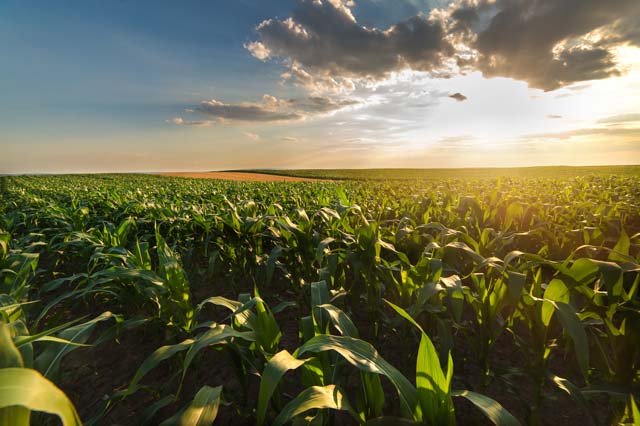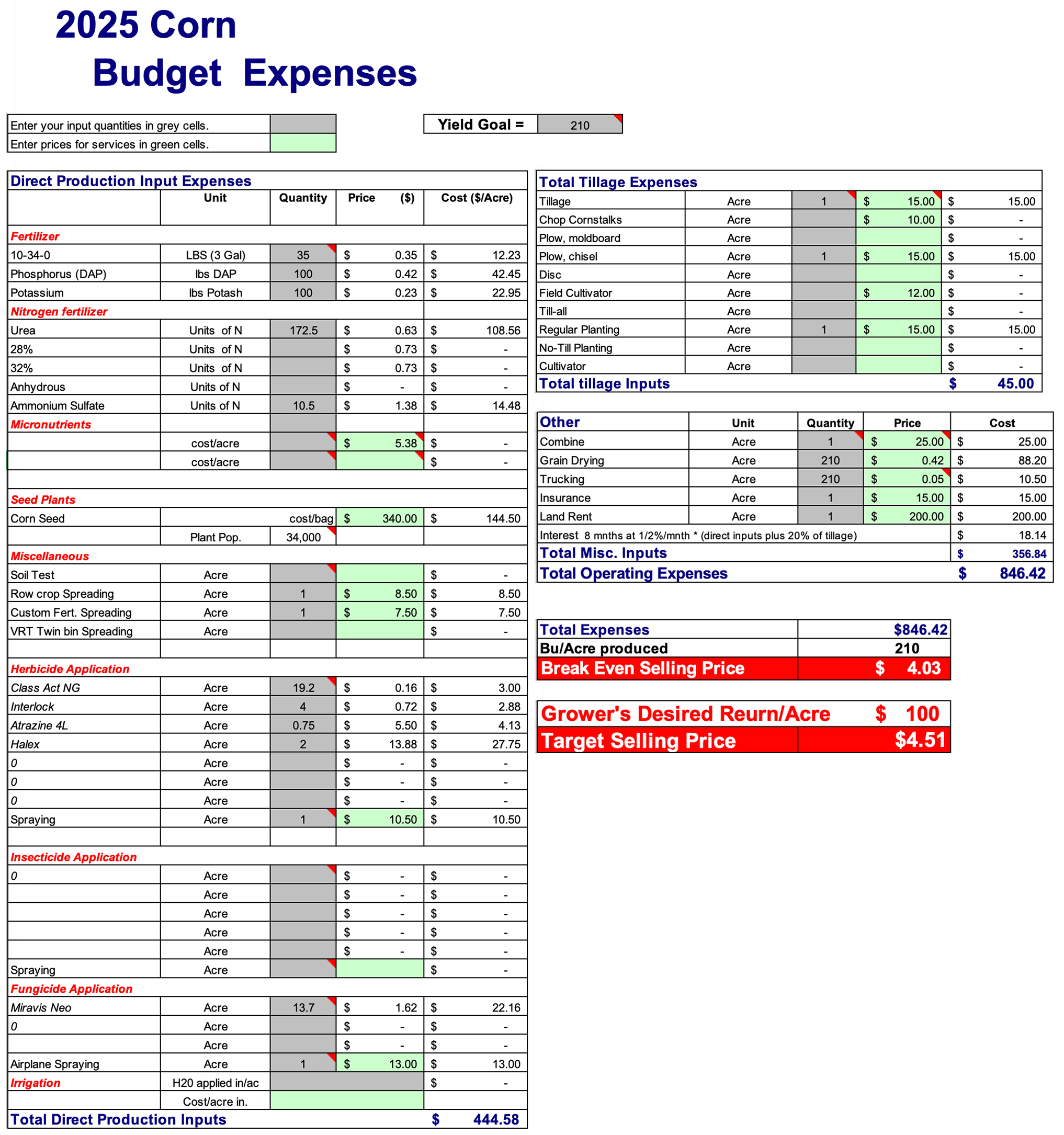Budgeting with Lower Grain Prices
May 16, 2025

With the drop in corn and soybean prices from last year, it is very tempting and sometimes necessary to cut back on inputs in response to declining revenues. This, however, often becomes a double-edged sword. While saving money, you might be costing yourself significant income. The best plan you can do is to use a budget spreadsheet to find out what a bushel of corn costs to produce on your farm. Having this information is the best way to make decisions on inputs and know your profit level when marketing your crop!
While many spreadsheets are available online, your United Cooperative agronomist has a very comprehensive budget worksheet to help you figure out your exact cost of production. In the scenario below with a modest fertilizer and crop protection program using a fungicide and a land value of $200 it cost $4.03/bushel to raise 210 bushel per acre. If you were to cut $50 in input costs, it would lower that number by $.24/bushel or $3.79/bushel. However, if yields drops 15 bu to 195bu/acre after your cuts your cost per bushel actually goes up to $4.08 even with the lower input cost.
The message is to be careful what you cut. If corn price goes up in the marketing year it would even be more costly to have lower yields. Work it through with your UC agronomist and get your breakeven number figured out.

While many spreadsheets are available online, your United Cooperative agronomist has a very comprehensive budget worksheet to help you figure out your exact cost of production. In the scenario below with a modest fertilizer and crop protection program using a fungicide and a land value of $200 it cost $4.03/bushel to raise 210 bushel per acre. If you were to cut $50 in input costs, it would lower that number by $.24/bushel or $3.79/bushel. However, if yields drops 15 bu to 195bu/acre after your cuts your cost per bushel actually goes up to $4.08 even with the lower input cost.
The message is to be careful what you cut. If corn price goes up in the marketing year it would even be more costly to have lower yields. Work it through with your UC agronomist and get your breakeven number figured out.
